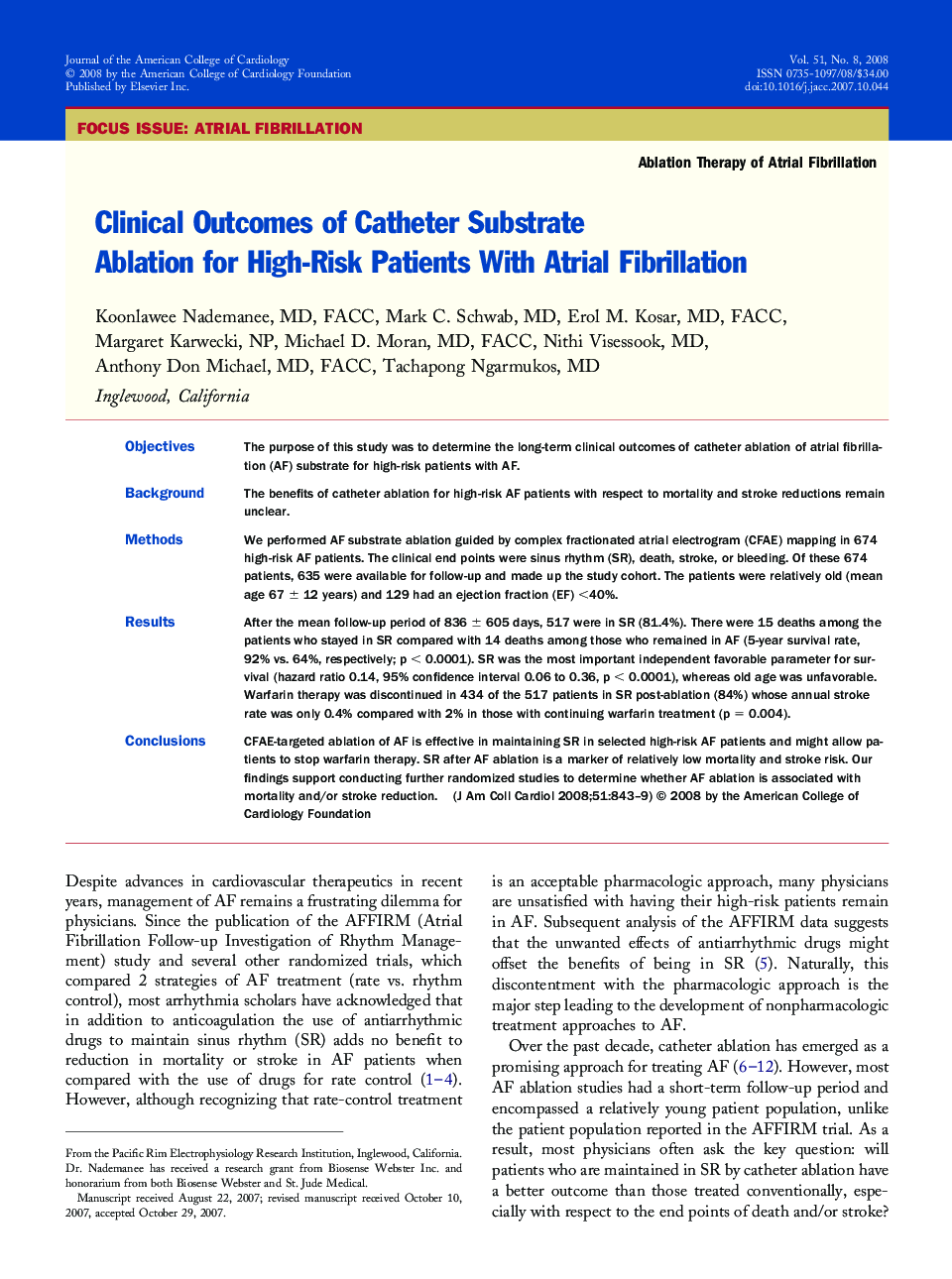| Article ID | Journal | Published Year | Pages | File Type |
|---|---|---|---|---|
| 2954047 | Journal of the American College of Cardiology | 2008 | 7 Pages |
ObjectivesThe purpose of this study was to determine the long-term clinical outcomes of catheter ablation of atrial fibrillation (AF) substrate for high-risk patients with AF.BackgroundThe benefits of catheter ablation for high-risk AF patients with respect to mortality and stroke reductions remain unclear.MethodsWe performed AF substrate ablation guided by complex fractionated atrial electrogram (CFAE) mapping in 674 high-risk AF patients. The clinical end points were sinus rhythm (SR), death, stroke, or bleeding. Of these 674 patients, 635 were available for follow-up and made up the study cohort. The patients were relatively old (mean age 67 ± 12 years) and 129 had an ejection fraction (EF) <40%.ResultsAfter the mean follow-up period of 836 ± 605 days, 517 were in SR (81.4%). There were 15 deaths among the patients who stayed in SR compared with 14 deaths among those who remained in AF (5-year survival rate, 92% vs. 64%, respectively; p < 0.0001). SR was the most important independent favorable parameter for survival (hazard ratio 0.14, 95% confidence interval 0.06 to 0.36, p < 0.0001), whereas old age was unfavorable. Warfarin therapy was discontinued in 434 of the 517 patients in SR post-ablation (84%) whose annual stroke rate was only 0.4% compared with 2% in those with continuing warfarin treatment (p = 0.004).ConclusionsCFAE-targeted ablation of AF is effective in maintaining SR in selected high-risk AF patients and might allow patients to stop warfarin therapy. SR after AF ablation is a marker of relatively low mortality and stroke risk. Our findings support conducting further randomized studies to determine whether AF ablation is associated with mortality and/or stroke reduction.
